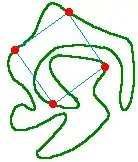The following is a quote from Surely you're joking, Mr. Feynman. The question is: are there any interesting theorems that you think would be a good example to tell Richard Feynman, as an answer to his challenge? Theorems should be totally counter-intuitive, and be easily translatable to everyday language. (Apparently the Banach-Tarski paradox was not a good example.)
Then I got an idea. I challenged them: "I bet there isn't a single theorem that you can tell me - what the assumptions are and what the theorem is in terms I can understand - where I can't tell you right away whether it's true or false."
It often went like this: They would explain to me, "You've got an orange, OK? Now you cut the orange into a finite number of pieces, put it back together, and it's as big as the sun. True or false?"
"No holes."
"Impossible!
"Ha! Everybody gather around! It's So-and-so's theorem of immeasurable measure!"
Just when they think they've got me, I remind them, "But you said an orange! You can't cut the orange peel any thinner than the atoms."
"But we have the condition of continuity: We can keep on cutting!"
"No, you said an orange, so I assumed that you meant a real orange."
So I always won. If I guessed it right, great. If I guessed it wrong, there was always something I could find in their simplification that they left out.
